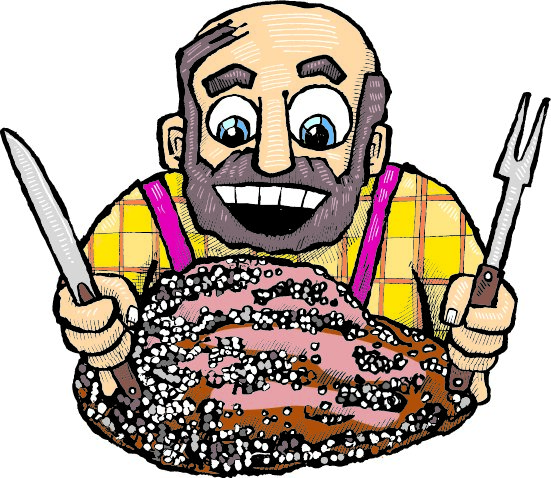Let’s start with the basics. A ham is the meat of the leg—nearly always the back leg—of a pig, from its ankle to its rump. If you were to go to the butcher shop and ask for one that was raw, you’d be getting what’s called a fresh ham. You could cut it up and cook it like any other fresh meat. But in the US, we almost never buy fresh ham. Instead, practically all hams we buy are cured.
The method of curing has a huge impact on its flavor and how you eat it. There are two methods for curing ham: a wet cure, and a dry cure. (If those sound familiar, you’re not wrong! These two methods are also both used for curing bacon.)
Let’s talk about wet cured hams first.
A wet cured ham is cured with a saltwater brine. Traditionally, you’d soak the ham in the brine for a few days or weeks, until the salt had penetrated the ham fully. In industrial settings, that process is sped up by injecting the hams with brine. After curing, the hams may be smoked. Before they’re sold, they’re typically cooked. These are the hams you’d buy at the supermarket and heat in the oven. The industry term for this style of ham is a city ham.
And then there are dry cured hams.
A dry cured ham is also cured in salt, but instead of a brine, the raw ham is coated in dry salt, then aged for months or years. All that time curing results in ham that has a very different texture than a city ham. Instead of being juicy and sweet, a dry cured ham tends to have a firmer texture and a saltier, deeper flavor. Dry cured hams are common in the US across a band of Appalachia from Tennessee to Virginia, where they’re called country hams. American country hams are typically smoked, adding an additional level of savory flavor. Dry curing is also used for many of Europe’s most famous hams, including Spain’s jamón Ibérico, France’s jambon de Bayonne, and Italy’s prosciutto di Parma. These hams are generally not smoked (though in some corners of Europe you do find smoked hams, like northern Italy’s speck).
Thanks to the long curing time, dry cured hams are safe to eat without any cooking. In the southern US, though, often they do get cooked. The first step is to soak the ham (or a few slices of it) in water for several hours to remove some of the salt. This is vital: without soaking, a big mouthful of this ham is overwhelmingly salty. After soaking, the ham can be heated in the oven or fried up in a pan. It can make for good eating, but it’s a very different experience than cooking a city ham: it’ll still always be firmer and saltier. Across the Atlantic in Europe, I’ve never heard of anyone cooking dry cured hams other than adding a few bits to boost the flavor of a sauce or stuffed pasta filling. Instead, the most common way to eat those hams is sliced paper thin and served at room temperature, maybe alongside bread or a few crackers and a good glass of wine. This is a great way to eat American country hams, too.
So which method is better?
It depends on what you want the ham for. For a special holiday meal, the city ham is your best bet. While it’s ready to eat at room temperature, it’s particularly delicious heated in the oven. For a tapas platter or charcuterie board, a dry cured ham makes for a stunning presentation without any cooking needed, and it’s so flavorful that even just a few bites can go a long way. And for a sandwich? Either one can be delicious.

